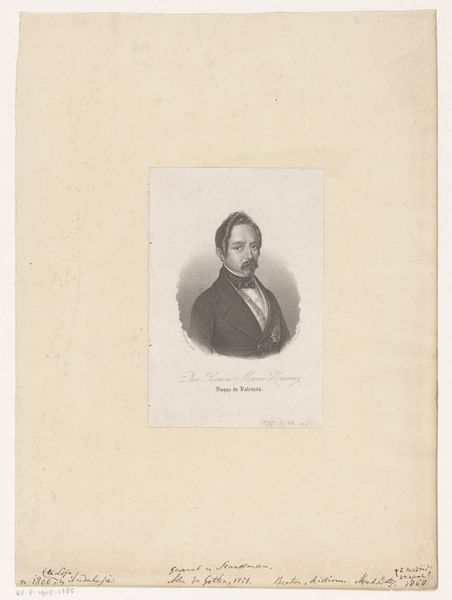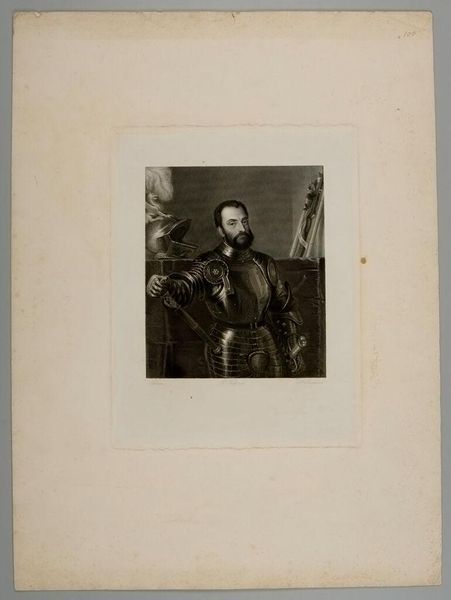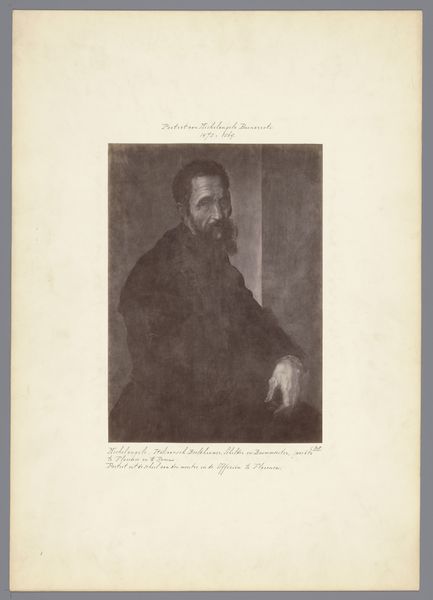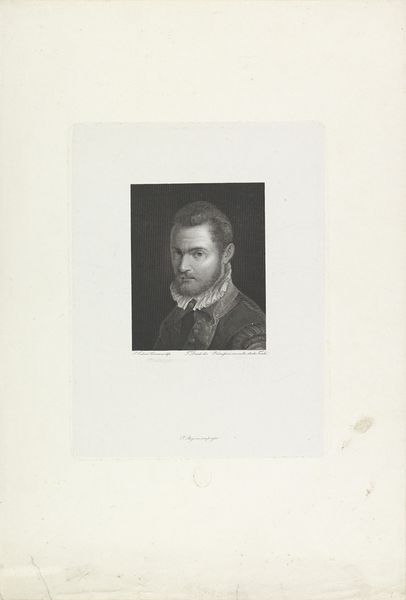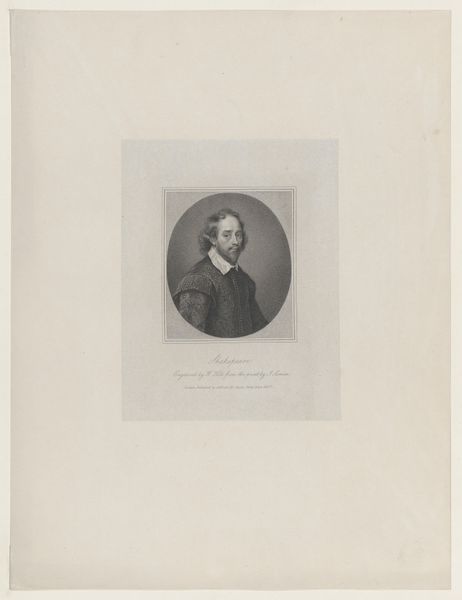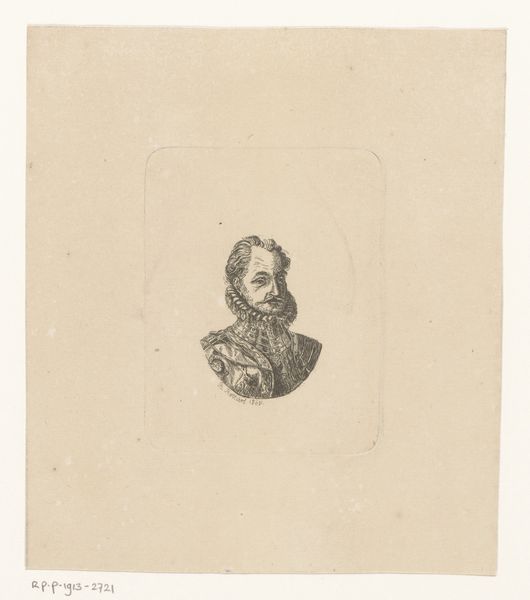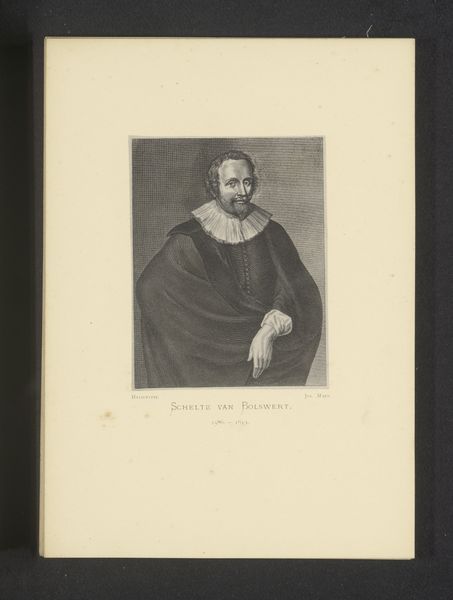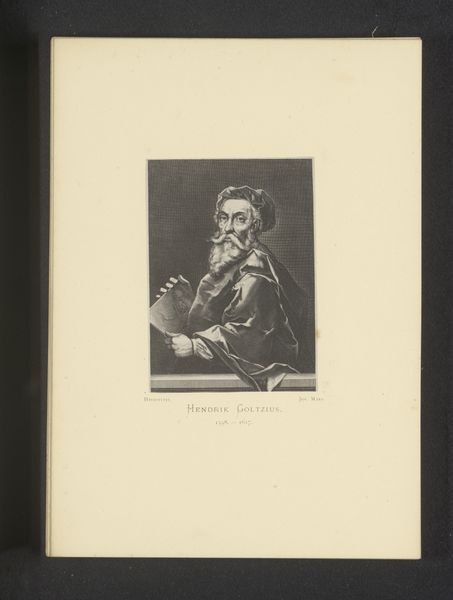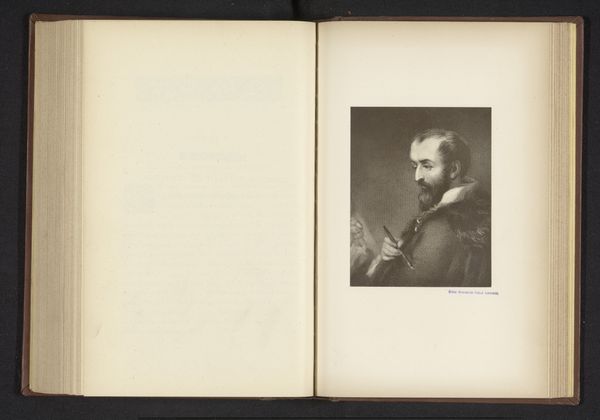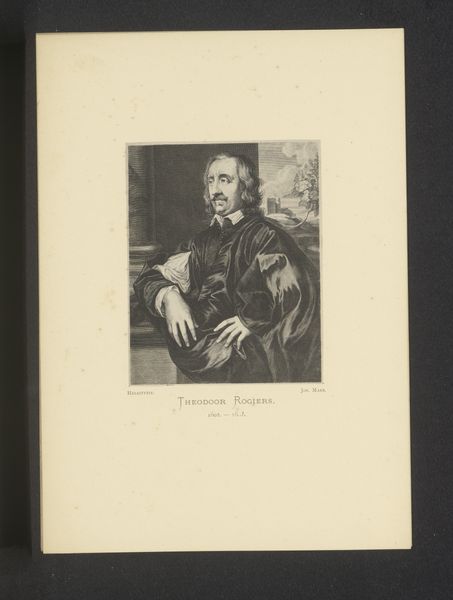
Dimensions: height 113 mm, width 93 mm
Copyright: Rijks Museum: Open Domain
Editor: So, this is a reproduction of an engraving of Anton van Opstal, dating from before 1877, by Joseph Maes. It's printed in ink on paper. I find it intriguing, how a copy can still hold so much character and the starkness almost feels modern, despite the subject's baroque attire. What stands out to you in this portrait? Curator: It’s compelling, isn’t it? I see a conversation, perhaps even a quiet rebellion. Here we have a reproduction – immediately inserting it into a discourse about originality and value. Anton van Opstal was a painter in his own right. But think about what it means to reproduce his image, to circulate it. Whose gaze are we inheriting and perpetuating here? How does this image speak to notions of authorship, representation, and the social hierarchy inherent in portraiture of the period? Editor: That's a fascinating point about authorship. I hadn't considered the power dynamic in reproducing someone's image. Curator: And beyond just the act of reproduction, let's consider the sitter's gaze and gesture. He's pointing—drawing attention. To what, though? Is he directing us, accusing us, inviting us into something? The artist has immortalized a man, but the act of reproducing ensures copies of him. What does that say about power then and the commodification of image making then? Editor: So, it becomes less about the individual and more about the idea of Anton van Opstal and about male portrayal. I’m also curious about the historical context of this image as a reproduction. Was it meant for a wider audience than the original? Curator: Exactly! It shifts the work from a celebration of individual accomplishment to participation within in a network of social production and political dialogue. Understanding the context of its reproduction unlocks those questions of accessibility and intended audience, disrupting conventional art historical narratives. Editor: I hadn't considered all those layers of meaning embedded in something that seemed like a simple portrait. Curator: That's the power of engaging with art through a critical lens. It allows us to see beyond the surface and understand the complex web of power, representation, and social meaning that these images carry.
Comments
No comments
Be the first to comment and join the conversation on the ultimate creative platform.

